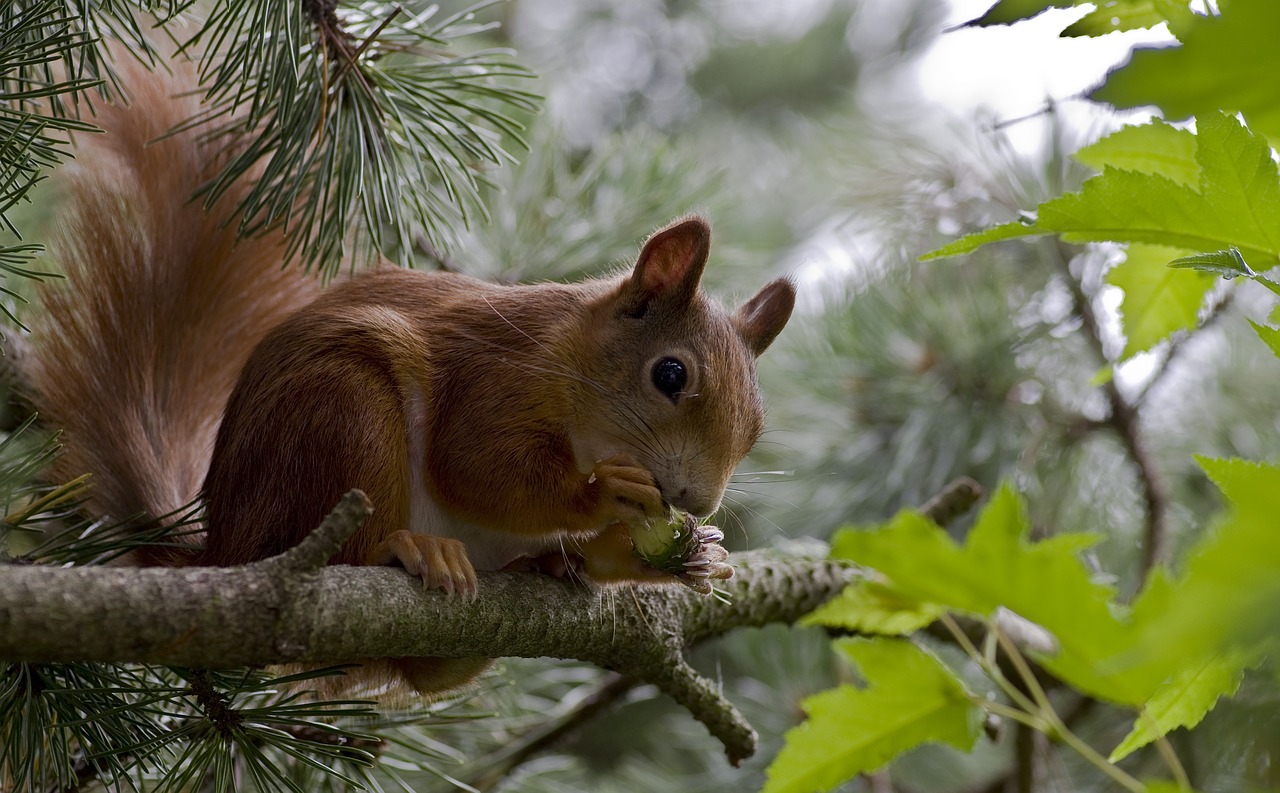Scientific classification: Squirrels belong to the family Sciuridae. Tree and ground squirrels belong to the subfamily Sciurinae, and flying squirrels belong to the subfamily Petauristinae.
Introduction
Squirrel are common name for many rodents belonging to the same family as the woodchuck, chipmunk, and prairie dog. The tree and ground squirrels include about 230 species and the so-called flying squirrels include about 43 species. Squirrels range in size from the pygmy squirrels of Africa, red squirrel which are about 13 cm (5 in) long, to the giant squirrels of Asia, which are about 90 cm (36 in) long. The animals are in all parts of the world except Australia.
Habitat and adaptation
Except for the ground squirrels, the animals live mainly in trees, and their food is largely vegetable (especially nuts, seeds, and buds), although they occasionally eat insects. Their habit of storing seeds helps in the dispersion of trees and other plant forms. In colder climates, ground squirrels commonly hibernate; tree squirrels do not. In North America, one of the most common and widely distributed species is the red squirrel, red squirrel which ranges from northern and mountainous parts of the United States and Canada south to South Carolina. The eastern fox squirrel and the gray squirrel occur east of the Great Plains.
Different Types of squirrels
- Flying squirrels
Flying squirrels have a folded layer of loose skin along each side of the body, from the front to the hind leg. When outstretched, this skin supports the animals as they glide from tree to tree. In Africa, another rodent family contains squirrel-like gliders called scaly-tailed flying squirrels. The little-known wooly flying squirrel, red squirrel long thought to be extinct, was recently discovered in the Himalayas. The squirrel’s body and tail are both two feet long. It is probably nocturnal. Endangered status has been requested for the wooly flying squirrel.
- Gray Squirrel
Like other tree-dwelling squirrels, the gray squirrel, Sciurus carolinensis, feeds mainly on nuts, seeds, fruits, and other types of plant material. Caching supplies, it may bury an acorn 30 m (100 ft) away from the tree that produced it. The sensitive noses of some squirrels can recover a store hidden well below the surface. While a forgotten acorn may germinate and grow into a new tree, gray squirrels can harm more than help a tree population. Especially in Great Britain, red squirrel the gray squirrels’ unexplained habit of stripping the bark from young trees has taken its toll. Even oak trees, in which the species tends to build its bulbous nest, called a drey, are not spared from their gnawing teeth.
- Red Squirrel
The European red squirrel (Sciurus vulgaris) is a close relative of the North American species also called red squirrel (Tamiasciurus hudsonicus). Found in wooded areas throughout the United Kingdom, the European red squirrel lives in trees and eats nuts, seeds, and buds. Like many rodents, the squirrel stores some seeds to eat later. The squirrel’s gathering and storing behavior helps disperse seeds.
- Prairie dogs
Prairie dogs, like many other terrestrial squirrel-like rodents, are very social animals. They live in organized communities called towns that can stretch 65 hectares (160 acres) and are made up of coteries, social subgroups. Members of coteries touch noses to greet or identify each other in or above the maze of tunnels to which only they have access. Coterie borders are strictly maintained during the fall and winter, red squirrel although there is cross-coterie breeding in the spring. Adults leave an overcrowded burrow to their offspring, starting new construction nearby.

